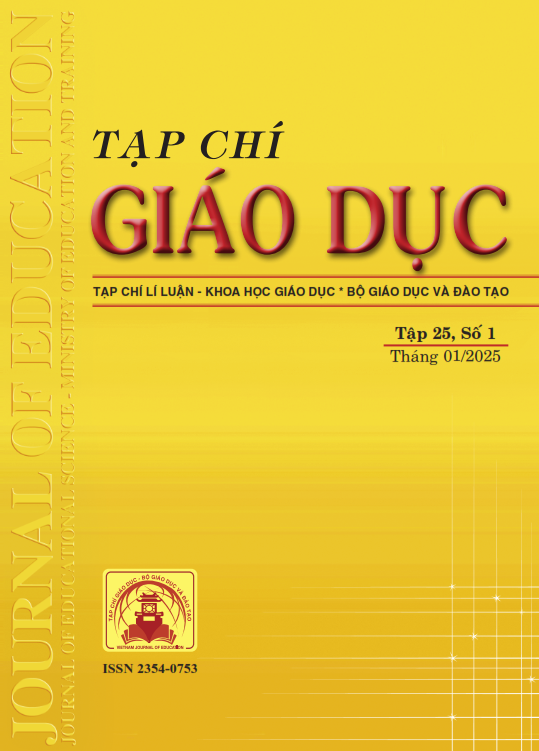Thiết kế công cụ tự đánh giá năng lực “Linh hoạt trong học tập” của sinh viên
Tóm tắt
In the context of contemporary education, which increasingly focuses on adaptability and developing lifelong learning skills, this study aims to identify the role and components of students’ “Learning Agility” competency. To achieve this goal, the researchers designed and verified a competency self-assessment toolkit through a survey and data analysis to identify the main components of the competency. The toolkit was developed based on experts’ opinions and data collected from a survey of 591 first- and second-year full-time students. The research results show that this toolkit can potentially be applied in educational institutions, supporting lecturers and students in assessing learning agility competency at the beginning or end of each semester. This is an essential step in improving the quality of training, helping students adapt better to the learning environment, and developing critical skills for the future.
Tài liệu tham khảo
Apino, E., & Retnawati, H. (2017). Developing instructional design to improve mathematical higher-order thinking skills of students. Journal of Physics: Conference Series, 812.
Burke, W. W. (2016). Learning Agility: The Key to Leader Potential. Columbia University Press.
De Meuse, K. P. (2017). Learning agility: Its evolution as a psychological construct and its empirical relationship to leader success. Consulting Psychology Journal: Practice and Research, 69(4), 267-295. https://doi.org/10.1037/ cpb0000100
De Meuse, K. P., Dai, G., & Hallenbeck, G. S. (2010). Learning agility: A construct whose time has come. Consulting Psychology Journal: Practice and Research, 62, 119-130.
DeRue, D. S., Ashford, S. J., & Myers, C. G. (2012). Learning agility: In search of conceptual clarity and theoretical grounding. Industrial and Organizational Psychology: Science and Practice, 5, 258-279.
Dewey, J. (1938). Experience and education. New York, NY: Macmillan Company.
Elliot, R. K. (2002). Twenty-first century assurance. Auditing: A Journal of Practice and Theory, 21, 139-146.
Gravett, L. S., & Caldwell, S. A. (2016). Learning Agility: The Impact on Recruitment and Retention. New York, NY: Palgrave Macmillan.
Hallenbeck, G. S. (2016). Learning Agility: Unlock the Lessons of Experience. Center for Creative Leadership.
Knowles, M. S. (1984). Andragogy in action: Applying modern principles of learning. San Francisco, CA: Jossey-Bass.
Lewin, K. (1936). Principles of Topological Psychology. New York: McGraw-Hill.
Lombardo, M. M., & Eichinger, R. W. (2000). High potentials as high learners. Human Resource Management, 39, 321-329.
Maisiri, W., Darwish, H., & van Dyk, L. (2019). An investigation of industry 4.0 skills requirements. The South African Journal of Industrial Engineering, 30(3), 90-105. https://doi.org/10.7166/30-3-2230
Silzer, R., & Church, A. H. (2009). The pearls and perils of identifying potential. Industrial and Organizational Psychology, 2, 377-412.
Thu, K., Ha, L., & Hung, L. (2024). A literature review on learning agility and proposals in the educational innovation context of in Vietnam. VNU Journal Of Science: Education Research, 40(2). https://doi.org/10.25073/2588-1159/vnuer.4895
Tải xuống
Đã Xuất bản
Cách trích dẫn
Số
Chuyên mục
Giấy phép

Tác phẩm này được cấp phép theo Ghi nhận tác giả của Creative Commons Giấy phép quốc tế 4.0 .












